 Sámegillii
Sámegillii  På norsk
På norsk
Articles about Sami school history
Part 13 - printed in Ávvir 06.06.2009
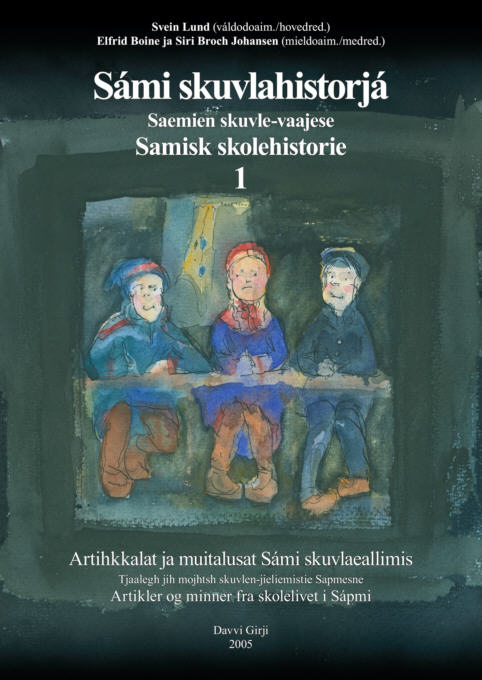 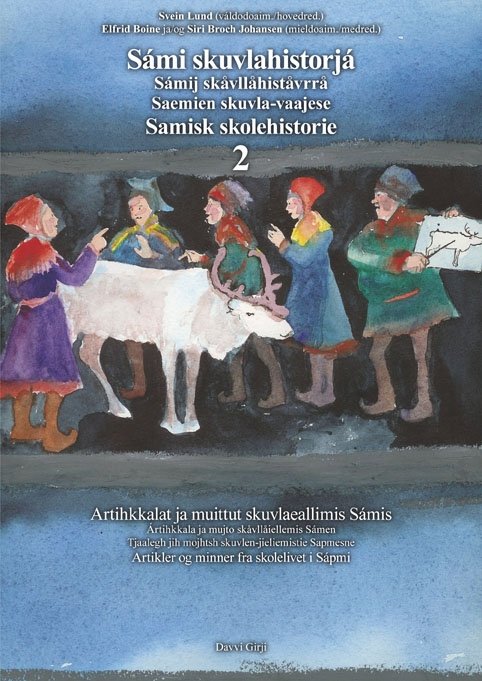 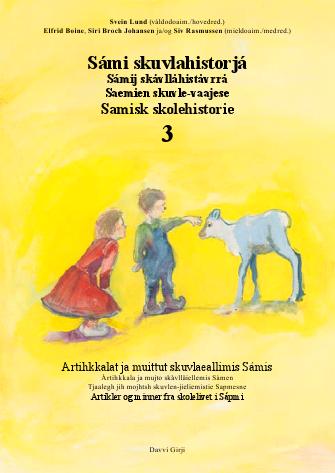 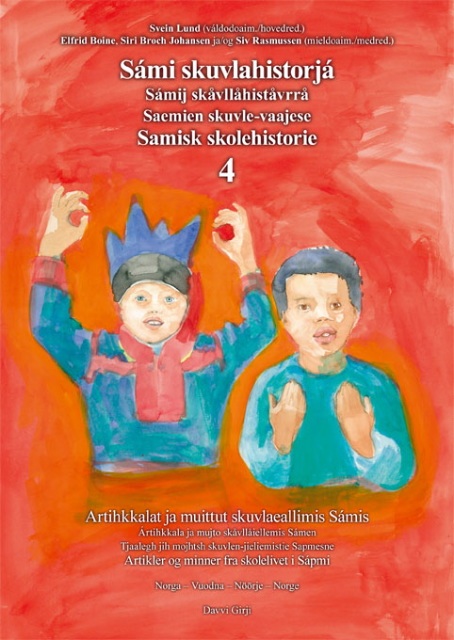 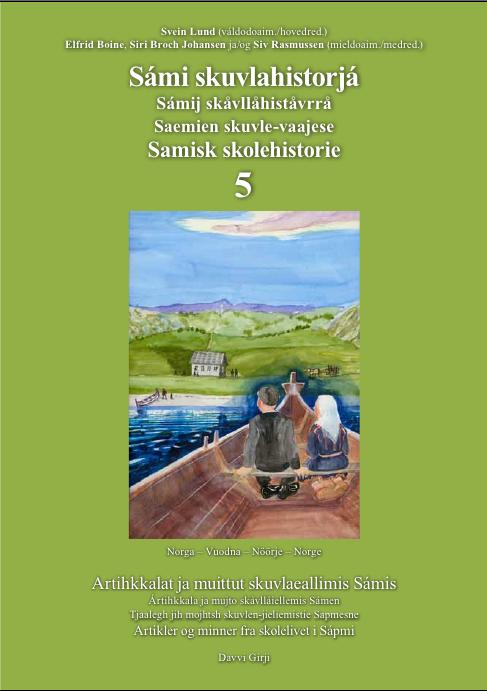
Do you know Sami school history?Sámi skuvlahistorjá / Samisk skolehistorie (Sami School History) is a series of books published by the publishing house Davvi Girji. In about 200 articles in 5 volumes there is told about the experiences of Sami children in Norwegian schools, and about the changes in the educational politics of the Norwegian authorities towards the Sami population. The books are published with parallell text in Sami and Norwegian language.In this web site some of the articles of the first book are also published in English. It would be too much to translate it all, so to make this history available to a greater public, we are translating a series of newspaper articles, which sorted by topics make a summary of stories in the books. So far there are 28 articles published in Sami language by the Sami newspapers Min Áigi and Ávvir. They are also published here in Norwegian and the English version will be published gradually as they are translated. These articles are edited by the main editor, Svein Lund. Besides him the editing board of the book series consist of Elfrid Boine, Siri Broch Johansen and Siv Rasmussen. |
– Both in Hasvik and in the school many people disdained us who came from the fjords, because we were not able to speak Norwegian completely correct. They called us «Øyfjord-lapps». There were often quarrels and fights between the children from Hasvik and the children from the fjords, and the children who were Norwegian, or thought they were Norwegian, teased the Sami children. I remember that they cut off the tips of my komags (traditional Sami footwear). I hade quite long hair, but once some of the Norwegian children cut off my hair with force.
The first years I was very afraid of the children who were bullying me. I remember that my brother and he who later would become my husband tried to comfort me. Once some of the children forced me to go to the grocery shop to buy chocolate on the account of the housekeeper. Of course the houeskeeper got angry, and I had to return to pay with my own money. But when the shopkeeper understood how things were, I did not have to pay. Another time they forced me to eat sheep dung. ...
The bullying of Sami children did not end with Larine's generation. Her eldest dauhgter, who was born in 1950, knew more Sami than Norwegian when she started school. But they bullied her in such a way that she quit speaking Sami afterwards. The younger ones grew up with Norwegian as their dominant mother tongue. But their Norwegian was influenced by the poor Norwegian of their parents, and «et glass» (a glass) turned into «en klass» etc.
Larine's daughter Irene tells:
– Other children bullied us a lot because of our poor Norwegian. The worst ones were maybe those who came from a Sami background themselves, and were trying to escape it. It continued like this for a long time, it was still like this until the 1960- and 70's. Once when we were playing with other children, a mother came running after us with a big plank and chased us while she was screaming: – Lapp-children (Sami children), go home, you are not allowed to play with our children! That is how we learned that we were worth nothing. Both children and grown ups were bullying Sami children. The teachers must have known that they were bullying us, but they did nothing about it.
(Larine Johnsen's story, SSH-3)
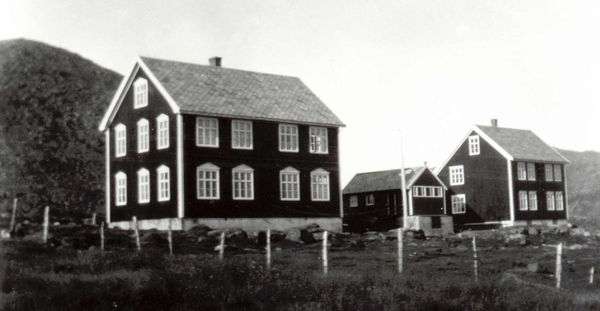 |
Hasvik school around 1930. The school is to the left and the dormitory to the right in the picture. (Photo from Ulf Jacobsen's photo collection) |
Ebba Westerfjell attended first grade in Havika Sami school, but the school was closed when the war began, and she continued her schooling in Majavatn.
- It was terrible to be there. I was the only Sami child in the school all the time, from 2. to 7. grade. It was no fun at all, I think it would have been better if there would have been more of us. ...
- It was the children, not the teachers which was the problem. One should not complain to the teachers. They were not so much out in the yard that they saw what was happening. I remember once we had had a test in Norwegian language. The teacher said to the class: "It is a great shame. Ebba speaks Sami at home and she is more clever in Norwegian than you." That he should never have said. That break afterwards became terrible. It was so bad that they never used my name, only words of abuse. What they said - no, it was so dirty words that I don't want to say them.
(Ebba Westerfjell's story, SSH-1)
- Already before the war there was antagonism between us Sami and others who lived in Stallogargo. For me this was strengthened through what had happened during the evacuation. The others had their Norwegian speaking environment with them, and had held on to their dialect. I on the other hand, could only speak the dialect from Trøndelag, I had never spoken Norwegian in the dialect from Finmark. The others tesaed me: «– The Lapp (Sami) has thrown away the komags and become so stuck-up that he can not speak regular Norwegian anymore.» I was often ridiculed because I «did not know Norwegian». Until this day I still do not have quite the same dialect as the others here. At first I thought the reason why I was bullied in school was that I was Sami. My relatives were also bullied some times, so it must have been one of the reasons. But I was the one who was bullied the most, and there must have been other reasons for that too. From the beginning on I asked a lot and learned fast, and at the same time I stood out because of the language. ...
One matter was the problems with bullying from the other children. But the treatment I got from the teacher was not much better. There was no understanding for the fact that I had a different linguistic background to the others. Among others, we had a teacher who was only about 20 years old. I do not know what kind of education he had, but it can not have been much. I was actually quite good in Norwegian, in many ways I had learned more than many others in the school where we were evacuated. I could write, both composition and dictations. The problem was that I could only write in New Norwegian, and that was not accepted. The teacher did not know New Norwegian, and when he read out loud what I had written, there was always laughter in the class. I remember I once wrote: «Eg sykla etter vegen» (I cycled along the road). The teacher read out loud: «Eg sykla etter veggen» (I cycled along the wall). He wanted to remove allof my New Norwegian, with the result that my entire exercise book became full of red lines. To survive in class I had to make myself more stupid than I was, I set myself back to the level of a 7-8 year old. I was put into an excepeptional position in the class because I was «stupid». With the result that I was made to draw letters as a punishment. I was also threatened with being sent to a special school. There was no disciplin in the class, since the teacher was not much older than we were, and never descended on pupils who teased and bullied each other.
(Klemet Vik's story, SSH-3)
In a letter to the editor, Alfon Andersen from Boltås / Vatnjavárri in Skånland has told about his first year of school in 1946. He and his twin-brother Harald did not know any Norwegian when they started school. They were hit on their hands with the ruler if they had been speaking Sami in the break. Some children were pulled by the hair. Alfon says: "We small fries learned fast, both due to hard blows on small children's hands and fierce pulling of the hair, we quickly quit speaking Sami".
(Randi Nymo's story, SSH-1)
- In Vestertana I had to take the dog and the big-knife when I went to school, otherwise I would not have managed there, at least not the first years. I tied the dog to the telegraph pole, and I also hid the big, old, rusty knife there.
... To arrive at school in Gárggogeahči we cycled from the head of the fjord in Vestertana, a ride of two kilometres, each on our own bicycle. I always had to go a little bit after the others, because I could not arrive at school before the schoolmistress had rung the cowbell to get the children in to the classroom. When the others went inside, I arrived with my bicycle and the old dog on a lead, heading towards the telegraph pole. I tied the dog and ran inside. In the breaks I had to be the first one to go outside and run to the pole. No one dared to come near the pole, because I had told them that the dog was very dangerous.
...
- "Fjellfinngubben, fjellfinngubben" (Mountain Lapp geezer, reindeer herding Sami), the children who lived in the dormitory used to yell. They came from places along the coast such as Stáhpogieddi, Lávvonjárga, Gohppi and Gávesluokta. I knew the children from Vestertana, there were never any fights with them. After all we had grown up together. And in addition most of them were relatives, descendants of Lásse Jussá, the cousin of my deceased grandfather Ivar. But in the school yard none of them dared to defend me.
(Niillas A. Somby's story, SSH-1)
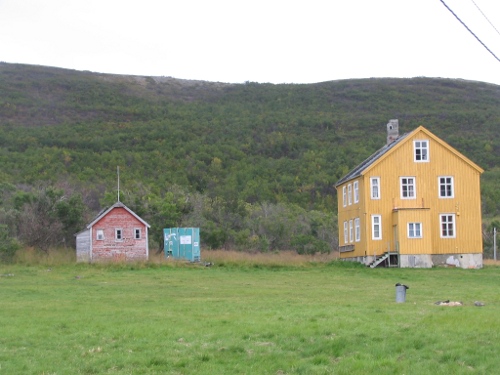 |
Vestertana dormitory is the only dormitory building in Finnmark which still is left as it was before the war. It was school there in the period 1934-63.
(Photo: Svein Lund) |
Many of the ones who went to school in the 1950-, 60- and 70's have difficulties speaking about it. Above all the ones who had bigger problems during their schooling. The ones who managed better are the ones who are able to tell something about it in retrospect. They say that in the 50's and 60's one experienced assaults on Sami pupils every single day. It was both from teachers and other pupils, and it could take the form of naming and bullying, or that they simply were overlooked and given a cold shoulder. The few who were good in school were not plagued directly, but one of them tells that it hurt just as much to see how her relatives and neighbors were harassed.
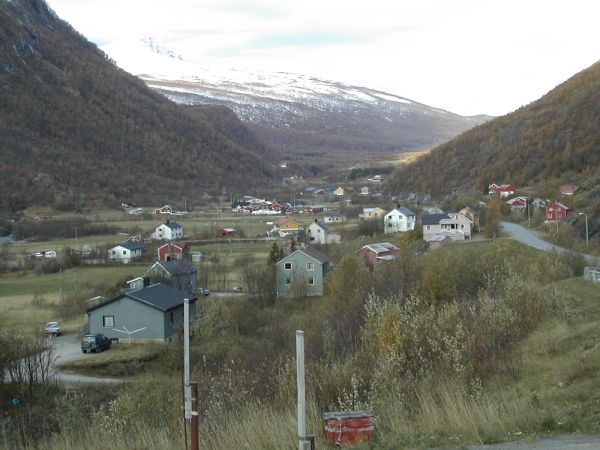 |
The Sami in Spansdalen live quite concentrated. In this area there was little earth for each farm in the time when everybody tried to make a living from agriculture. (Photo: Svein Lund) |
It was common that the teachers simply gave up the children from Spansdalen. There was not made any demands to the children from Spansdalen, they were not asked when there were recitations of homework in class, and they were left playing with putty when the other children in the class learned numbers and letters.
When you ask people from Spansdalen about how the bullying in school took place, it can be difficult to get clear examples, maybe most of all because many have tried to repress the memories of that time. But this is at least one case: The headmaster had made a tape recording with an old woman from Spansdalen, who spoke very poor Norwegian. Afterwards he placed the tape recorder on the desk of a pupil from Spansdalen and played the tape back for the class, while he was laughing openly.
This is how one of those who were a pupil in the 60's sums up his time in school: – All the years in school were a daily struggle. It is incredible that some of us are still whole human beings. But many are not, and are left with both a ruined self image and psychic damages for life. ...
Nordlys printed several articles about Spansdalen, and in an interview 13.12.1979 Tor Ivar Andersen says: «Bullying of children from Spansdalen have been taking place all the time in Lavangen central school, although it was worse earlier than it is now. This bullying is a result of the attitudes the rest of the people in Lavangen have towards the Sami population in Spansdalen. I would also assert that these are attitudes which we notice not only in the relationships among the pupils, but also in the relations between pupils and teachers. It is manifested in attitudes such as «the children from Spansdalen do not matter so much.» Maybe they do not notice these attitudes completely themselves, but we who come from Spansdalen know that they exist.»
In the same newspaper the headmaster Terje Karlsen has also been interviewed. He declares that «No bullying is taking place at Lavangen central school today, neither of children from Spansdalen nor of others».
(Article from Lavangen, SSH-3)
Here you find all the articles in the series:
28.09.2007 Why Sami school history?
05.10.2007 Boundless ignorance
12.10.2007 Southerner-teachers encounter the Sami language
19.10.2007 The start of Sami beginner instruction
26.10.2007 The start of education in reindeer-herding
02.11.2007 From Sami to Norwegian vocational training
16.11.2007 Struggle for Sami gymnasium
28.11.2007 School experiences of Norwegian speaking Samis
14.12.2007 Resistence against Sami language and culture
25.01.2008 A strange world
23.05.2009 On Sami teachers
30.05.2009 Life in boarding school
06.06.2009 Sami pupils were bullied
13.06.2009 Sami content in the teaching
20.06.2009 Pupil as interpreter
04.07.2009 How the children quit speaking Sami
10.09.2010 God does not understand Sami
08.10.2010 The point of view of the Norwegianizers
13.10.2010 Men of the church defending the Sami language
02.12.2010 Sami teachers in old times
09.12.2010 Boarding school life in old times
18.12.2010 Sami pupils in special schools
14.01.2012 The parents' struggle for Sami education
21.01.2012 Reluctance and absence
28.01.2012 The school during the war
04.02.2012 Reconstruction and barrack schools
11.02.2012 Curriculums - for Norwegianization and for Sami school
18.02.2012 The great struggle of the curriculum
Sami school history 1
Sami school history 2
Sami school history 3
Sami school history 4
Sami school history 5
Sami school history - main page